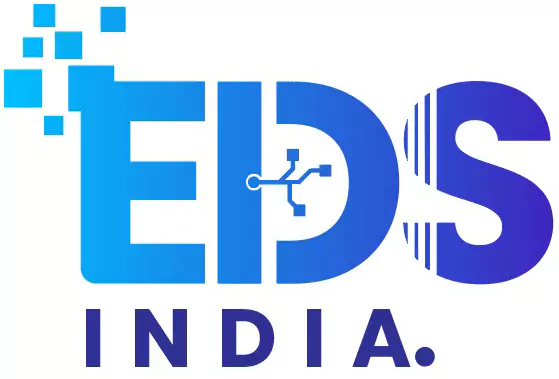Services
Training + Support

Advanced Learning In Data Science
Eds India is a leader in the industry when it comes to offering organizations and people training in data science. Our “Data Scientists Expert Team” has years of expertise working with enormous amounts of data utilizing state-of-the-art tools and methods to find previously unnoticed patterns, produce valuable data, and make business decisions. Our instructors have created unparalleled teaching strategies to give learners the information and abilities needed for the creation of sophisticated machine learning algorithms for the construction of predictive models throughout the full data science pipeline.

Overview Of Data Science Courses
Data science, often known as data mining, is the process of obtaining important information from many types of structured or unstructured data. The goal of data science is to examine, classify, and analyze metadata from many sources and use it to make decisions, improve company operations, and draw conclusions. Our Advanced Data Science training program was created by our industry professionals to assist people in understanding how Data Science functions and how it contributes significantly to Artificial Intelligence (AI). To help students develop into successful Data Scientists and enhance their capacity to analyze corporate data and derive actionable insights, our professional trainer will lead interactive training sessions.
Click Here for More Details – CTA
SECTION - 1
- NumPy in Python for Data Analysis
- Overview of NumPy and NumPy Arrays and Aggregations
- Broadcasting fancy indexing, sorting, and computation on arrays
- Structured Arrays in NumPy
SECTION - 2
- Installing Pandas and Pandas Objects in Python for Data Analysis
- Data Handling Using Pandas’ Data Indexing and Selection Indexing Missing Data Hierarchically
- Pivot Tables that Concatenate, Append, Merge, and Join Aggregations and Grouping
- Variable-length string operations
- Utilizing time series
SECTION - 3
- Matplotlib for Python for Data Visualization Overview
- Two Interfaces for an Object-Oriented Interface
- Scatter plots with Basic Line Plots
- Visualizing mistakes
- Shape Plots
- Binnings, density, and histograms
- Changing the Plot Legends
- Personalizing Color Bars
- Several Subplots
- Three-dimensional plotting for text annotating
SECTION - 4
- Python for Data Visualization by Seaborn
- Plotting the distribution regression analysis, importing the dataset, and setting up Seaborn
- Basic Aesthetic Themes and Styles
- Explain the differences between the Scatter, Hexbin, and KDE charts.
- Use box plots and violin plots
SECTION - 5
- Introduction to Machine Learning
- Importance \sTypes
- Working mathematics machine learning
SECTION - 6
- Introduction to Natural Language Processing
- NLP Example Benefits
- Applications of NLP
SECTION - 7
- Deep Learning
- Introduction
- Importance
- Working
SECTION - 8
- Large-scale Big Data Analysis
- Phases of the Data Analytics Lifecycle State of Practice in Analytics Main Roles for New Big Data
- Ecosystem
SECTION - 9
- Data Workflow in R: Data Manipulation and Data Cleaning
- Data Reading, Exporting, Importing, Charts, and Graphs
SECTION - 10
- R’s regression
- Analysis of Regression
- Logical Linear Regression Regression
- Multiple Regression
- Standard Deviation
- Binomial Sequence
SECTION - 11
- Data modeling in Power BI
- Model for Power BI Data
- What Kind of Relationships Exist?
- Viewing Interactions
- Building Connections
- Cardinality
SECTION - 12
- Data Combination and Shaping using the Power BI Query Editor Data Shaping and Applied Steps
- Data Formatting, Data Transformation, Data Combination, Advanced Editor
SECTION - 13
- Data visualizations that are interactive
- Layout and formatting of pages
- Numerous Visualization
- Using Geographic Data Histograms to Produce Charts
How Does Data Science Operate?
Modern approaches are used in the field of data science to analyze vast amounts of data in order to find patterns and insights, extract useful data, and improve business decisions. Data for analysis is delivered in many formats, comes from numerous sources, and goes through five unique stages, each of which has a specific set of tasks. For example:
- Data Entry, Data Acquisition, and Data Extraction under Capture
- Keep up with Data Processing, Data Warehousing, and Data Cleaning
- Clustering, data mining, data summarization, and modeling are the processes used.
- Analyze using regression, qualitative analysis, and predictive analysis
- Data visualization, business intelligence, and decision-making in communication
How Does Data Science Operate?
We give you our custom crafted credentials to assist you sate your hunger for knowledge. We are your top choice for training because of our highly qualified teachers, committed team, and 24/7 hotline.
The Best Price Guaranteed
There isn’t a finer deal to be had in the market. Send us the offer if you discover a lower price, and we’ll match it.
0% Class Skip
No matter if the training is conducted in a physical classroom, online, or on-site, it is 100% assured to take place on the dates specified.
Professionals
Highly skilled organization; our instructors and support personnel have years of expertise delivering great quality while fulfilling the unique demands of our clients.



